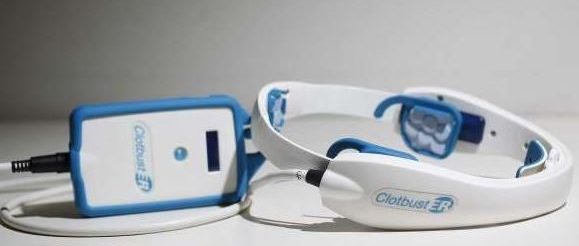Key Points:
- ATTR amyloid cardiomyopathy, resulting from accumulation of TTR amyloid protein in the heart, leads to progressive heart failure, complicated by arrhythmias, with a significant increase in worsened quality of life, hospitalization, and death
- This study tested the efficacy and safety of vutrisiran, a novel subcutaneously (SQ) administered RNAi therapeutic, dosed quarterly, to treat ATTR amyloid cardiomyopathy
- Vutrisiran demonstrated statistically significant improvement over standard therapy (tafamadis, SGLT2i inhibitors, and diuretics) on both primary and secondary outcomes, including mortality, disease progression, and quality of life
- The authors argue these results support vutrisiran as a reasonable new standard-of-care for ATTR amyloid cardiomyopathy patients, either as first-line for new diagnosis, or alternative vs add-on therapy in treated patients with progressive disease
ATTR amyloid cardiomyopathy (ATTR-CM) is a notable cause of heart failure (HF) that results from accumulation of either wild type or variant transthyretin (TTR) amyloid protein deposits in the heart muscle. This disease leads to a particularly devastating subtype of progressive HF, complicated by arrhythmias, and resulting in progressive HF, worsened functional status and quality of life (QOL), increased hospitalizations, and death. Fortunately, as ATTR-CM is recognized more broadly, early diagnosis and improved HF management have resulted in a contemporary population with less advanced disease and management with state-of-the-art medical therapy, including tafamadis, SGLT2-inhibitors, and diuretics. However, given the unique pathophysiology and harmful effects of the disease, novel and targeted therapies remain needed to improve patient QOL, prevent hospitalization, and increase survival.
Vutrisiran is a novel subcutaneously (SQ) administered RNAi therapeutic to treat ATTR amyloid cardiomyopathy. Its hypothesized mechanism of action is targeting hepatic production of both variant and wild TTR protein deposits, thereby treating both variant and wild-type ATTR-CM by preventing amyloid fibril deposition in the heart. Furthermore, it is dosed every 3 months, compared to daily dosing of tafamadis and often similar dosing schedules of SGLT2-inhibitors and diuretics. In a trial of a contemporary ATTR-CM patient populations, the authors aimed to compare efficacy and safety of vutrisiran with standard therapy: the HELIOS-B study.
The HELIOS-B study was a randomized double-blind trial of 655 patients with any ATTR-CM with symptomatic HF. About 40% of enrolled patients were on tafamadis. Those with NYHA Class IV failure were excluded. After a 45-day screening period, patients were randomized 1:1 to vutrisiran vs placebo every 3 months. Primary endpoint was composite outcomes of all-cause mortality and recurrent cardiovascular events during double-blind period (months 33-36 of the study) in the overall population and the monotherapy population (those not on tafamadis). Secondary endpoints included change in 6-minute walk test (6-MWT) time at 30 months, change in Kansas City Cardiomyopathy Questionnaire (KCCQ) overall score at 30 months, change in NYHA class at 30 months, and all-cause mortality at 42 months. Baseline characteristics were balanced between control and therapy groups and consistent across subpopulations.
Vutrisiran demonstrated improvement over placebo overall for the composite primary outcome with HR 0.718 (95% CI: 0.555, 0.929). Notably, this remained significant among those younger than 75 as well as those with baseline NT-proBNP < 2000. However, statistical significance did not persist for the subgroup with baseline tafamadis use (n = 259): HR 0.785 (95% CI: 0.511, 1.207). Regarding secondary outcomes, vutrisiran demonstrated significant improvement in time to all-cause mortality (HR 0.645 [95% CI: 0.463, 0.898]), 6-MWT time (26.46m [95% CI: 13.38, 39.55]), and KCCQ-overall score (5.80 [95% CI: 2.40, 9.20]). Adverse event rates were similar between the vutrisiran and placebo group (3.1% vs 4.0%).
Ultimately, vutrisiran demonstrated improvement in composite outcome of reduced all-cause mortality and recurrent CV events among ATTR-CM patients, as well as improvements in quality of life and functional status. Though limited by statistical significance among background tafamadis patients, results trended toward improvement overall and remained consistent across various subgroups while demonstrating safety and tolerability. The study authors conclude that the results of the HELIOS-B trial support the use of vutrisiran as a reasonable new standard-of-care for ATTR amyloid cardiomyopathy patients, either as first-line for new diagnosis, or alternative versus add-on therapy in treated patients with progressive disease. Professor Fontana, principal investigator of the study, summarized with these remarks: “Vutrisiran was highly effective and well tolerated in this contemporary population representative of patients that we see in our clinics, with consistent benefits regardless of background tafamidis therapy. Our findings indicate that vutrisiran has the potential to become the new standard of care. This trial is also important as it is the first to show the benefit of gene silencers in any type of cardiomyopathy.”




